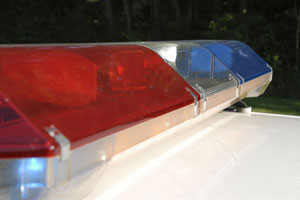Hollister police Sgt. James Egan’s blood-alcohol content was .05
percent
– .03 percent under the legal driving limit – from a test taken
two hours after a minor vehicle accident on Highway 25 in January,
his attorney Greg LaForge told the Free Lance today. Prosecutors in
late January had charged the sergeant with suspicion of driving
under the influence, but Egan acc
epted a plea deal of dry reckless driving on Dec. 1.
HOLLISTER
Hollister police Sgt. James Egan’s blood-alcohol content was .05 percent – .03 percent under the legal driving limit – from a test taken two hours after a minor vehicle accident on Highway 25 in January, his attorney Greg LaForge told the Free Lance today.
Prosecutors in late January had charged the sergeant with suspicion of driving under the influence, but Egan accepted a plea deal of dry reckless driving on Dec. 1 and pleaded no contest. He received a sentence of probation for a year, a $480 fine and 40 hours of community service.
LaForge today said he had spoken to Egan and that they are releasing the number to “clear up any confusion” about the case.
“He was not guilty of a DUI,” LaForge said. “It was not a cover-up.”
The district attorney’s office has declined to release Egan’s blood-alcohol content. The California Highway Patrol, the arresting agency, has noted how it has a policy against releasing a suspect’s BAC and instead leaves it up to local district attorneys offices to disclose the information when it no longer can jeopardize a case. The Free Lance last week submitted an official public records request to District Attorney Candice Hooper’s office.
Deputy District Attorney Patrick Palacios, who handled the prosecution, today said the office “at this point” declines to comment on the .05 BAC disclosed by LaForge.
As to why the office has declined to disclose the figure, Palacios had this to say: “It’s our policy that we don’t release it unless it becomes public knowledge from the courts.”
Palacios added that local prosecutors “don’t vary” their rules based on the defendant.
LaForge, meanwhile, said the notion of officers acting “in cahoots” was the “furthest thing from the truth.”
“If, in fact, Joe the Plumber had a .05, I highly doubt he’d be put through the ringer like Sgt. Egan has,” LaForge said. “I doubt the district attorney would have even filed charges.”
January accident details
Egan’s accident resulted in a flat tire and his 2003 Chevrolet Silverado pickup truck became stuck in mud on the side of Highway 25. A San Benito County sheriff’s sergeant arrived and sent Egan to Hazel Hawkins Memorial Hospital as a precaution because of a recent surgery, according to authorities at the time.
At the hospital, Egan was hooked up to an I.V. and given pain medication. The CHP, meanwhile, responded to the accident scene. A CHP officer then went to the hospital to check on Egan.
“Upon contact, I observed objective symptoms of alcohol intoxication and conducted a DUI evaluation on the driver,” the officer wrote in his report. That evaluation included field sobriety tests and a blood test.
Court documents indicate a motion for suppression filed by LaForge contended that “a nonconsensual blood draw must be supported by probable cause to result in a lawful arrest.”
The motion contended that the arresting officer did not go to the hospital due to a belief that a crime had been committed and that the blood test was, therefore, inadmissible.
The motion to suppress, in part, reads as follows:
“There are no facts whatsoever to warrant the taking of Sergeant Egan’s blood. He was in the emergency room being treated by emergency room staff, when, 42 minutes later, in walked a CHP officer who stated in his report, ‘I had decided to go to the hospital and let the driver (Sgt. Egan) know where his vehicle had been towed to and to tell him that he had been unable to locate his firearm.’ There was absolutely no probable cause for the officer to even be at the hospital, as referenced in his own report.”
LaForge has contended it is a violation of Egan’s Fourth Amendment rights and constitutes unlawful search and seizure. LaForge also had filed a lengthy motion, which responded to expected “retrograde extrapolation” of Egan’s BAC by prosecutors. Retrograde extrapolation is a process by which scientists attempt to estimate a person’s BAC at a time before testing occurred. In this case, LaForge argued the prosecution would attempt to prove a certain state of impairment at the time of the accident.
LaForge’s motion cited many studies and cases where this practice has been deemed unreliable and ends by stating the practice is “voodoo science that is totally unreliable in a Court of Law.”










